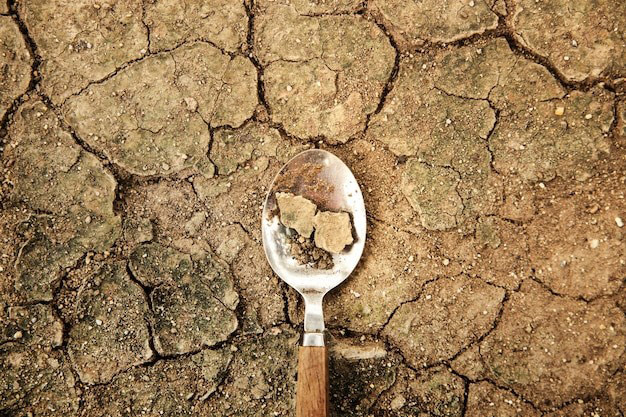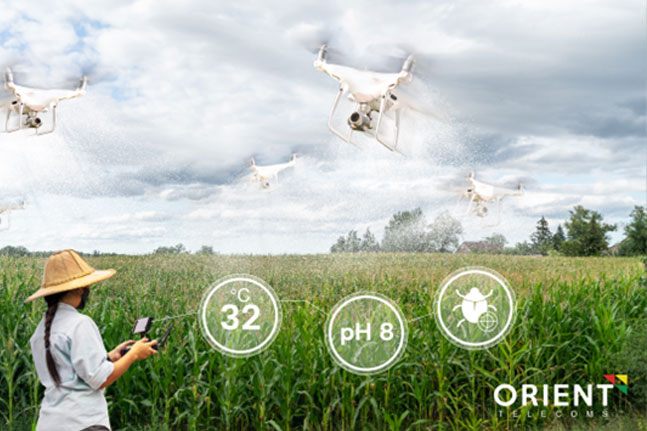
Digital Agriculture: Feeding the future
May 1, 2023
HOW TO REDUCE FOOD WASTE DURING STORAGE
July 11, 2023A combination of conflict, the climate crisis, and the ripple effects of COVID-19 have left the world losing progress in the fight for Zero Hunger. But that doesn’t mean that all hope is lost. Some are relatively simple, short-term solutions. Others are more complex, requiring lasting change and commitment at the international level. But it’s a cause worth fighting for. Here are nine world hunger solutions that are guiding Concern’s work in 24 countries around the globe.
1. EMBRACE CLIMATE SMART AGRICULTURE
Climate change and hunger exist in a vicious cycle. More frequent and longer-lasting periods of extreme temperatures, flood events, and dry spells leave many families — especially those who work in agriculture — unable to put food on the table. Climate Smart Agriculture (CSA) is a broad term that encompasses a number of practices. But all of these solutions allow farmers to adapt and become more resilient against an unpredictable climate.
These practices include diversifying crop varieties, conservation agriculture, and low-water sack gardens. Time and again, we’ve seen families benefit both nutritionally and financially from these solutions.
2. RESPOND TO THE REFUGEE CRISIS
Forced migration is a key cause of hunger, and we are currently in the middle of an unprecedented global refugee crisis. This is also true for other forms of displacement. Refugees and IDPs are some of the most vulnerable groups when it comes to hunger. So are their host communities, whose resources are often very thinly spread.
Much of the work to stop conflict needs to take place on a government and policy level, but one-way Concern can help is through programs that facilitate new ways to generate income. For example, Syrian refugee women and their Lebanese neighbors have learned to make staples like cheese and yogurt, as well as how to sell them at market for a profit. For those who wish to return home to Syria, this will also be an essential skill to have when the country eventually rebuilds its infrastructure.
3. ADVOCATE FOR GENDER EQUALITY
Gender equality is another key solution to world hunger, especially in two key areas: agriculture and maternal and child health.
Women make up approximately half of the agricultural workforce in many of the countries where Concern works, and data from the Food and Agriculture Organization suggest that giving female farmers equal access to resources as their male counterparts could increase production on their farms by 20-30%. This could in turn reduce the number of hungry people in the world by up to 150 million.
Hunger affects maternal health, making female nutrition essential to ending hunger. According to the World Food Programme, women are more likely than men to go hungry in nearly two-thirds of the world’s countries. By prioritizing women’s health and nutrition, we can prevent not only health complications for them if and when they have children, but also for the children they bear. This begins with puberty and continues through pregnancy, breastfeeding, and on through healthy habits that children can maintain for the rest of their lives.
4. REDUCE FOOD WASTE
Currently, one-third of all food produced is wasted — that’s over 1.3 billion tons. Producing this wasted food also wastes other natural resources. It requires an amount of water equal to the annual flow of Russia’s Volga River, and creates 3.3 billion tons of greenhouse gases.
Ending food waste would be a radical shift, but it’s one that you can be a part of by simply reducing your own food waste. It’s especially important in countries like the United States (which contribute more to climate change but feel the effects less than more vulnerable countries) to take these steps towards climate justice. You can also ask your representatives to commit to policies that reduce waste and better the whole food system.
5. INVEST IN DISASTER RISK REDUCTION
Investing in disaster risk reduction — especially in vulnerable communities — mitigates potential losses in the wake of disasters for those who stand to lose the most. Most of the people with whom we work are involved in subsistence agriculture, meaning that they grow what they eat. For many, their harvests are never enough, and the prospect of losing what they do grow is the very definition of disaster. Simple techniques to protect and diversify crops can be very effective. Protecting the homestead and livestock is important too; losing vital shelter and assets can quickly lead to hunger.
6. SUPPORT HYGIENE AND SANITATION
Sometimes, people (especially children) eat enough. But if they live in an area with insufficient sanitation or poor hygiene practices, they may be susceptible to diarrhea or other waterborne illnesses that prevent them from absorbing those nutrients. Making sure that drinking and washing water are uncontaminated can save a life — in more ways than one.
7. CONTROL INFESTATIONS AND CROP INFECTIONS
It’s not just drought and flood that we have to worry about. Crops may also be decimated by pest or fungus invasions. When we entered this decade, eastern Africa (including Kenya, Ethiopia, Somalia, and South Sudan) faced an unprecedented locust crisis, the effects of which are still being felt. Some locust swarms were as large as 25 miles in diameter and moved on to invade central Africa and even parts of West Asia including Yemen, Iraq, and Iran. Over 13 million people were estimated to have gone hungry as a result.
In these extreme cases, aerial spray is the only way to effectively curb swarms. But other agricultural practices can confront smaller-scale invasions or deadly funguses that can also destroy crops and raise food prices. Disaster preparedness goes a long way here, too, as cash transfers, new seeds, and supplies can offset these losses.
8. ENHANCE CROPS WITH BIO FORTIFICATION
With limited resources (including land, labor, and finances), the poorest farmers tend to focus on growing a limited number of crops such as maize, rice, pearl millet, beans, and sweet potatoes. This means that they often lose out on food rich in micronutrients like Vitamin A and iron. This can lead to significant micronutrient deficiencies that can leave lifelong impacts on young children.
Though Concern works with farming communities and households to diversify their crop production, we also promote the use of bio fortified crops, including iron-enriched beans and pearl millet, as well as sweet potatoes (which are higher in Vitamin A). All of the bio fortified crops that Concern promotes are the result of conventional breeding in the countries where they are being promoted. These crops allow families to greatly increase their intake of those critical micronutrients in the short-term. They can also be saved by farmers for subsequent replanting without loss of the bio fortified traits.
9. IMPROVING FOOD STORAGE SYSTEMS
What if you have plenty of food, but lack the storage solutions to make it last? This is another problem that, when solved, can make a big difference in closing the hunger gap. Sometimes this requires big interventions, like building or rehabilitating grain stores. Other times, this is a change that can happen at the household level.
One innovation Concern has introduced into women’s self-help groups around the world are solar dryers. Sun-drying vegetables, a traditional practice, preserves micronutrients and prolongs shelf lives. Solar dryers, which operate by (you guessed it) exposure to sunlight are eco-friendly devices that accelerate this process, while also reducing contamination and minimizing nutrient loss.
https://www.concernusa.org/story/world-hunger-solutions/





